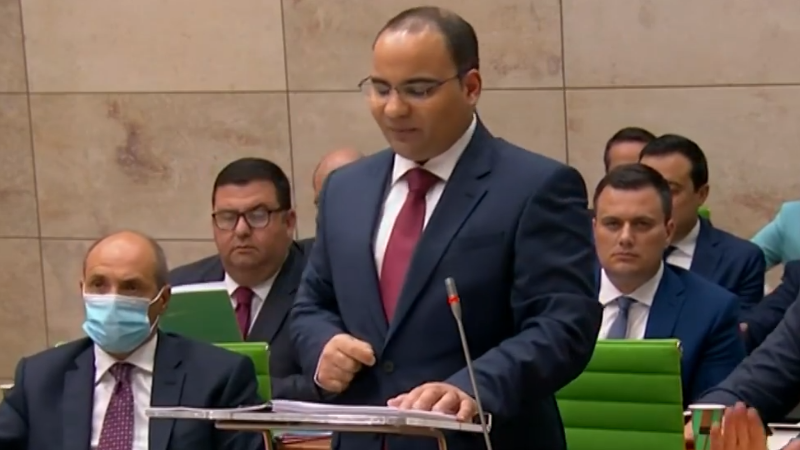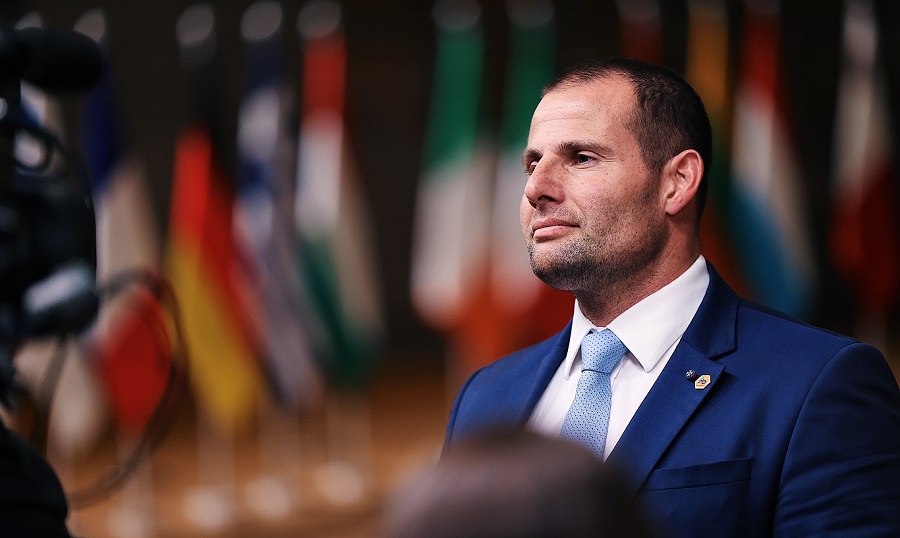Last week, the government announced its 2022 budget, which is going to cost €6.95 billion – a rise of as much as 53% on this year’s spending plan of €4.55 billion.
A comparison of the expenditure of each government ministry and entity listed in the 2022 documents with those published for Budget 2021 reveals that overall expenditure for next year is set to increase by €2.4 billion.
Data from last year’s Budget indicates that these same entities had allocated themselves €4.55 billion. To put these numbers into perspective, the expenditure of the five top-spending ministries for the upcoming year adds up to just over €5 billion – more than all of last year’s budget combined.
The top spender for the upcoming year will be the ministry for Social Justice with a massive €1.81 billion budget, followed by the Finance and Employment ministry with €1.15 billion. The Health ministry follows, with €972.8 million, then comes the education ministry with €797.5 million and the home affairs ministry with €295.2 million.
The tables in red below (hover mouse over column for details) illustrate planned spending for all ministries, including non-ministerial offices such as the office of the Ombudsman and the National Audit Office.
Overall, when compared to last year’s budget, 18 ministries, including the prime minister’s office, will be claiming a larger pot of money, with just two ministries asking for less cash – the ministry for energy, enterprise and sustainable development and the ministry for economy and industry. Almost half of the overall €2.4 billion increase will be allocated to the social justice ministry’s €1.36 billion bump in allocated funds.
The second largest increase in spending will go to the finance ministry, which will see an additional €739 million being added to its budget, to cater for both recurrent and capital expenses. The third biggest hike in funding will be given to the health ministry, which is getting a €148 million increase on last year’s allocation.
The tables in blue below show ministries’ expenditures last year.
The Office of the Prime Minister alone will get an increase of €9.3 million to cover its expenses for the upcoming year. In contrast, spending at the Office of the President will remain roughly at last year’s level.
2021 v 2020
Over the first six months of this year, figures from the National Statistics Office (NSO) indicate that there was an overall increase of €416.9 million in expenditure when compared to the first six months of 2020.
The government’s recurrent expenses are subdivided into personal emoluments (such as salaries, wages, bonuses, and income supplements), operational and maintenance expenses (including utilities, materials, supplies and rents), programmes and initiatives such as the COVID relief packages, and contributions to government entities including funding to government authorities and corporations.
By far the biggest chunk of cash marking this €416.9 million increase comes from a €326.3 million increase in spending on programmes and initiatives, with the bill for COVID relief amounting to almost €200 million on its own.
The second biggest increase in spending was for salaries and wages, amounting to around €61.7 million. The third largest was reported for contributions to government authorities and corporations, with an increase of €32.7 million.
But what about revenue?
NSO statistics indicate that the first six months of 2021 have seen an increase in recurrent government revenue, indicating a somewhat positive recovery period for the post-COVID economy when compared to the first six months of 2020.
According to the NSO, government generated €2.16 billion in recurrent revenue over the first six months of 2022 – an increase of 18.8% over last year’s first half figure of €1.82 billion.
In particular, the NSO reports a 34.1% jump in money generated from income taxes, followed by a 27.5% climb in VAT revenue, a 24.2% increase in social security contributions, an 13.1% hike from customs and excise duty fees and a 5.1% rise in fees relating to licenses, taxes and fines.
However, while these increases amount to an overall expansion in government revenue of €411.6 million, revenue losses amounting to €68.9 million were also reported, leaving the difference at an overall net positive increase of €342.7 million.
In spite of the boost to state revenue versus the first six months of 2020, it remains to be seen whether this expensive Budget’s promises can be kept. The government is now expecting to close this year with a deficit of €1.52 billion, or 11.1% of GDP. The Shift has previously reported that Malta’s public debt has ballooned by €2.1 billion over 18 months, and will reach 61.8% of GDP by the end of the year.
Besides declines in overall economic activity that have forced the government to take on moe debt, as well as hold out for EU stimulus packages to cover its increase in spending throughout the pandemic, Malta’s grey-listing still hangs over the country’s head, with financial sector operators, in particular, reporting steep declines in revenue and waning interest in further investment in the country.















More free cash to relatives, friends and cronies,and most paid by direct order. Only in Malta!
A debt of 61,8% of GDB is already alarming. We have to rely ,of course, on the statistic provided by the government. The government has a way of hiding certain debts and so the percentage figure must be higher than the one given.